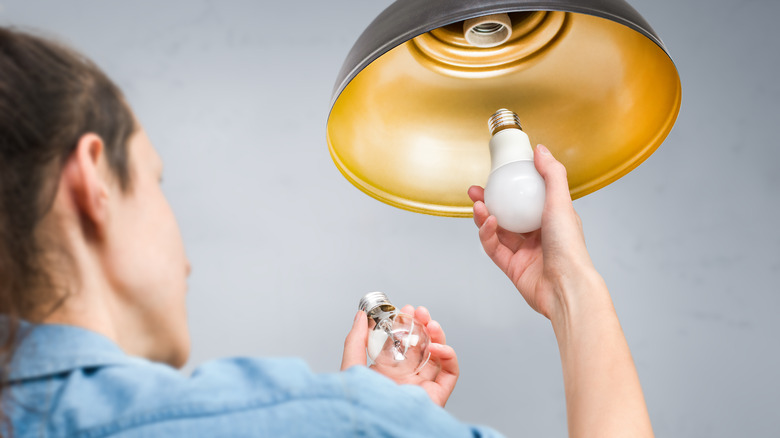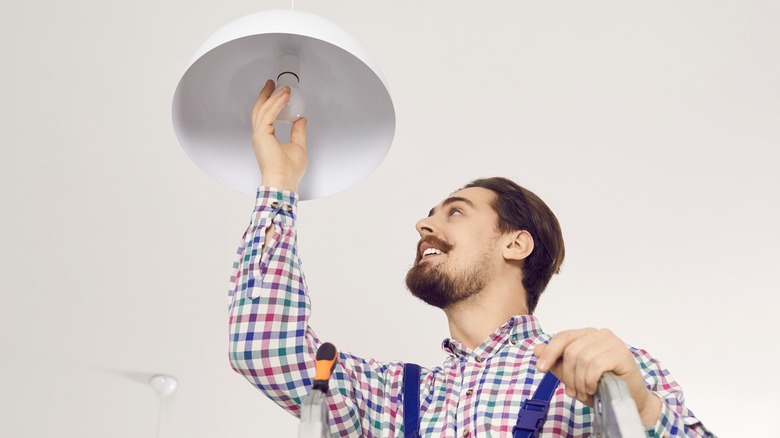LED Vs. Incandescent Bulbs: Which Impacts Your Electric Bill More?
At this point you're likely familiar with the often-touted upsides to using LED (light-emitting diode) bulbs instead of incandescent (glass with a heat-based filament) ones. LED bulbs are said to last significantly longer on average, they don't burn quite as hot so there's less of a fire risk, and they claim to save you money on your electric bill. But they're also more expensive than the much older bulb model, and in the past they've been noticeably dimmer than their classic counterparts, which can make their overall worth questionable for some.
Another thing to bear in mind before crunching any numbers is that incandescent bulbs haven't changed very much over the years, while LEDs have been steadily improving since their introduction to the mass market. Modern LED bulbs don't just go toe-to-toe with most incandescent bulbs when it comes to brightness and effective illumination — some can actually be less expensive as well.
Though saving a dollar or two per bulb at the checkout doesn't make a difference when it comes to your monthly bill. So just how much of a monetary difference do LED bulbs really make, if any?
Money matters
The biggest factor in how LEDs affect your bill is time. Energy Star-rated LEDs are approximately 75% more energy efficient than their incandescent counterparts. If a 60 watt incandescent uses 60 watts, while a comparable LED only uses around 10 to 15 watts, it's signifcant. Breaking that down over something like three hours of use per day and that means using 65,700 watts per year on a single incandescent, versus roughly 16,425 watts per year on a LED (if we use the 15 watt bulb example).
With an estimated $0.52 per month cost on the incandescent and about $0.09 per month on the LED, that comes to around $6.22 a year per incandescent bulb compared to $1.04 a year per LED bulb. And remember, this is only a single bulb being used on average. When you consider a house full of bulbs, that can be quite a large amount of savings.
So basically, yes, LED bulbs will save you quite a bit on your bill overall — despite the higher upfront bulb cost. However even that may be a bit exaggerated these days as LED bulbs can often be found at comparable prices. Additionally, LEDs tend to last much longer (sometimes 30 times longer) so even if they do cost a couple dollars more you won't have to replace them anywhere near as often.

